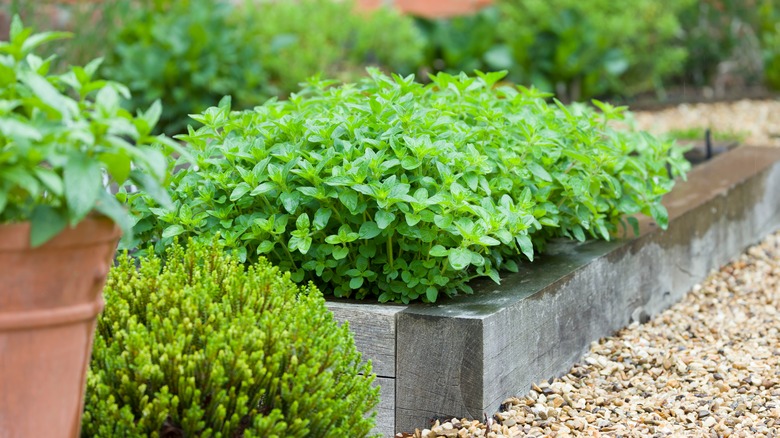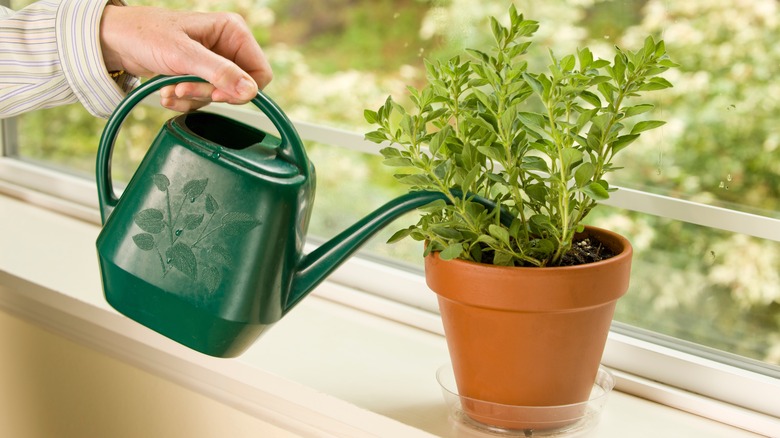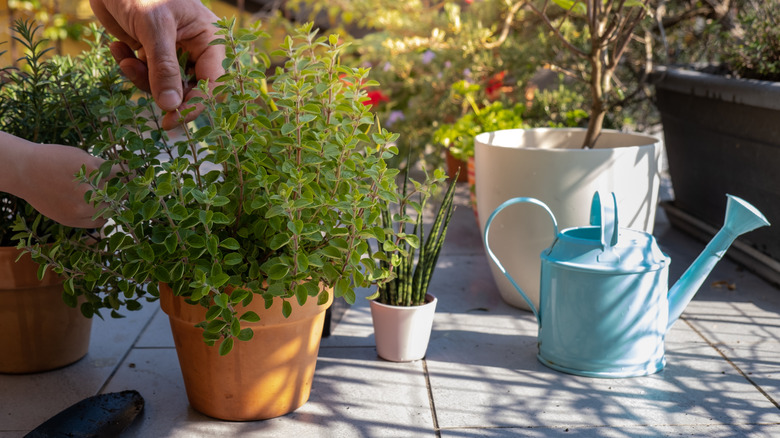The Biggest Mistakes That Are Made When Growing Oregano
Oregano is a versatile herb used in various cuisines, adding a distinct earthy flavor and aroma to all kinds of dishes, from pizza to taco seasoning. Growing oregano allows gardeners to have a fresh and readily available supply of this flavorful herb. Oregano plants are relatively low-maintenance and easy to grow, making them suitable for both experienced gardeners and beginners. All that being said, there are still several mistakes you can make that will lead to a less bountiful harvest, but they can easily be avoided or remedied.
Oregano plants need space to spread and grow, so planting them too close together creates competition for nutrients and airflow, leading to stunted growth and increased susceptibility to disease. Give each plant enough room to develop fully. Furthermore, although oregano is generally resistant to pests and disease, it can still be affected by issues like aphids, spider mites, or powdery mildew. Regularly inspect your oregano for any signs of infestation or disease, and take appropriate measures, such as using neem oil or removing affected parts of the plant promptly.
Overwatering and over-fertilizing oregano
To avoid overwatering oregano plants, it's important to both understand their watering needs and be attentive to the signs of overwatering. Check the soil moisture before watering by feeling the top few inches of soil. If it feels dry to the touch, it's an indication that the plant needs water. If it's still moist, hold off on watering until the top inch of soil dries out. Remember, oregano prefers slightly dry conditions (making it a great companion plant for other drought-tolerant herbs like rosemary or thyme), so it probably needs less water than you think. Adjust the frequency of watering depending on your climate, the size of the pot, and the type of soil. When you do water, water deeply and provide a thorough soaking to encourage deep root growth — water until you see it trickling out of the pot's drainage holes. Avoid shallow, frequent watering, as it can lead to poor root growth and increased susceptibility to overwatering.
To avoid over-fertilizing oregano, it's essential to understand the plant's nutrient requirements. Oregano generally thrives in moderately fertile soil. It doesn't require heavy feeding like tomatoes, squash, or corn. Use organic, slow-release fertilizers that provide a steady supply of nutrients over time to prevent the risk of over-fertilization. Monitor your plant's response as well, and if the oregano appears healthy and vibrant without any signs of nutrient deficiencies, it is likely not in need of additional fertilization.
Pruning, soil, and light tips
Pruning oregano is a simple process that helps maintain its shape, promote bushier growth, and prevent legginess. In early spring or fall, trim back stems using clean and sharp pruning shears. Cut back one-third of the stems, focusing on the longer and leggy ones. Make the cut just above where the stem meets another branch. Remove any weak, damaged, or overcrowded stems to improve airflow and reduce disease risk. Regular pruning helps keep oregano plants healthy, productive, and visually appealing.
Another tip to help your oregano flourish is to pot it in well-draining soil with a slightly acidic ph. Using heavy or compacted soil can lead to waterlogged roots and hinder deep root growth. It's also important to prepare the soil by adding organic matter like compost or worm casings to improve its fertility and drainage, and to lessen the need for fertilization later. Moreover, oregano is a sun-loving herb that requires at least six to eight hours of direct sunlight each day. Insufficient sunlight can lead to weaker plants with reduced flavor and aroma, so ensure that your oregano is placed in a location with ample sunshine.


